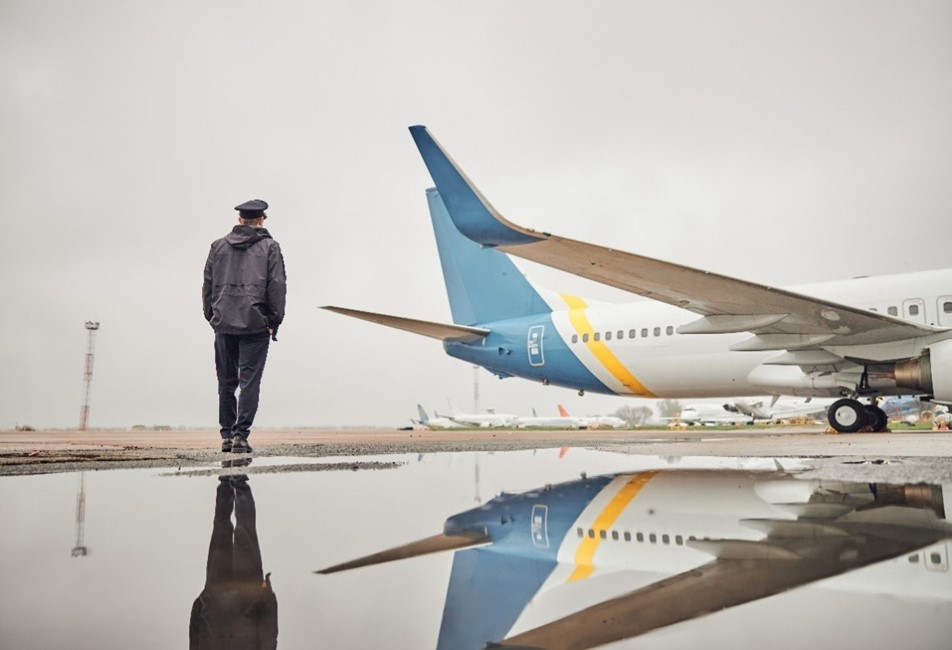2024 Digital Transformation Challenges in the Travel Industry

What’s Happening in the Travel Industry 2024
The recent global health crisis and other extenuating circumstances out of our control have resulted in an economic downturn. Enterprises worldwide affect the aviation industry the most. During an economic downturn, key economic indicators such as GDP, employment, and industrial production may decrease, while inflation and bankruptcy rates may increase.
Various factors, such as decreased consumer demand, a contraction in credit availability, natural disasters, geopolitical events, or global economic shocks, can cause economic downturns. They can range from a mild slowdown to a severe recession or depression.
Our current global changes over the past few years have had a negative effect on individuals, businesses, and governments. This has led to lower incomes, job losses, business closures, higher overhead costs, fewer available resources, and decreased profits. Many companies are turning to digital transformation to weather the storm and come out stronger on the other side.
Continued Investment in Digital Transformation Despite Economic Outlook

Companies that continue to invest in innovation and growth are the ones that come out ahead in the end.
According to a report by IDC, worldwide spending on digital transformation technologies and services will reach $2.3 trillion in 2023, up from an estimated $1.3 trillion in 2018. It represents a compound annual growth rate of 17.1%. The report states that companies are investing in digital transformation technologies and services to improve customer experience. This is mainly done to create new revenue streams and increase efficiency.
Enterprises must be strategic about their digital transformation initiatives during a teetering and tumultuous time. They need to focus on initiatives that will help them save costs, drive revenues, or both. Northrop Grumman is leading the way in partnering with customers on their digital transformation.
While dealing with tighter budgets can create cascading issues, the ultimate question is, “How can you achieve more with less?”
Digital Transformations Pushing the Aviation Industry Forward

The aviation industry is transforming digitally, with many airlines adopting cloud-based applications, big data, and IoT. The industry is embracing digitalization and data-driven decision-making, intending to become 100% digital. To improve customer experience and airline performance and stay competitive, 90% of airline leaders seek digital initiatives. Digital technologies can enable airlines to reduce planning cycles and become more agile and flexible.
Despite the challenging economic climate, companies continue to prioritize digital transformation and invest in technology. It is particularly evident in the aviation industry, where advancements in digital technology have had a significant impact.
Key digital advancements in aviation
Digital advancements in aviation have transformed the industry in recent years, leading to increased safety, efficiency, and convenience for passengers. Here are some of the key digital advancements in aviation:
Electronic Flight Bags (EFBs): EFBs are mobile devices such as tablets or smartphones that pilots can use to access flight information and manuals.
Automated Check-in and Boarding: Passengers can check in and board their flights using self-service kiosks or mobile devices, reducing wait times and increasing efficiency.
Advanced Navigation and Communication Systems: GPS, satellite communications, and other advanced systems enable pilots to navigate and communicate with air traffic control more efficiently, improving safety and reducing delays.
Maintenance Management Software: Software systems can monitor aircraft systems and generate alerts when maintenance is required, reducing downtime and improving safety.
In-flight Entertainment and Connectivity: Passengers can access movies, TV shows, and other entertainment options on their personal devices or through seatback screens, and many airlines now offer Wi-Fi and other connectivity options.
Through adopting and implementing new technologies, airports are rethinking their operations to become safer, more viable, secure, and more efficient. While these digital advancements have transformed the aviation industry, they also present challenges when it comes to software and digital adoption. Businesses need to adapt to these advancements to remain competitive and provide a seamless experience for passengers.
Evolution of the Airline Industry

The airline industry has come a long way since its inception. Over the past century, airlines have dramatically improved their technology, safety standards, and customer service to become the robust industry it is today.
In 1914, they instituted the earliest commercial airline, and in 1919, it took off with its first passenger flight. The industry was largely unregulated until the Air Commerce Act of 1926, established the Department of Commerce to oversee the industry. This act also sets standards for aircraft and pilot qualifications and air traffic control.
The introduction of jets in the 1950s revolutionized air travel. Planes were much faster, could fly higher, and were more fuel efficient than their propeller counterparts. It allowed airlines to drastically reduce travel times and increase the number of routes they could offer. The deregulation of the industry in 1978 further increased competition and drove down prices.

With the influx of demand, travel, commercialization, and advancements, the travel industry has undergone a massive digital transformation in recent years. The introduction of online booking facilities, mobile apps, automated check-in, and e-tickets has made booking a flight more accessible and convenient.
Addressing the Key Challenges of Aviation with Apty’s Digital Adoption Platform
Digital transformation and technology adoption are crucial for the airline industry to remain competitive and efficient. Digital adoption platforms (DAPs) are vital in facilitating software adoption and new technologies. Below, we explore how DAPs help overcome various airline industry challenges:
1. Technological Readiness
The United States topped the 2023 IMD World Digital Competitiveness Ranking, emphasizing its robust technological infrastructure and readiness to adopt digital technologies (IMD School) (Network Readiness Index). DAPs enhance technological readiness by providing seamless integration and user training, ensuring organizations can leverage their digital infrastructure effectively. This is crucial for the airline industry’s digital transformation, enabling airlines to stay competitive and efficient.
2. Compartmentalization
A survey by Gartner found that 80% of IT leaders believe that compartmentalization in cloud environments enhances security by isolating sensitive data (IMD School). DAPs support compartmentalization by guiding users on securely managing and accessing data within cloud environments, thereby enhancing data security. This is particularly important for airline industry solutions that deal with vast amounts of sensitive passenger data.
3. Response to Changing Customer Preferences
According to Salesforce, 65% of customers expect companies to understand their needs and expectations, with 40% switching brands due to poor personalization (IMD School). DAPs facilitate rapid adaptation to changing customer preferences by enabling employees to quickly learn and utilize new tools and technologies that improve customer personalization. This is key to airline digital transformation, ensuring better customer experiences and loyalty.
4. Bringing Aircraft Out of Storage
IATA reports that in 2023, the average time to bring aircraft out of storage was reduced by 30% due to advancements in maintenance technology (IMD School). DAPs can support these advancements by providing real-time guidance and training on maintenance procedures, ensuring swift and efficient aircraft reactivation. Addressing this challenge is a part of the broader aviation industry challenges.
5. Keeping Up With Airline Technology Trends
“Aviation professionals should be comfortable navigating digital systems, understanding basic programming concepts, and using software tools relevant to their roles. With the influx of data in aviation, understanding data analysis tools and techniques is crucial. People working in a company should be open to learning and adapting to new technologies as they emerge,” says the Director of Aerviva Aviation Consultancy.
SITA’s 2023 Air Transport IT Insights report finds that airports and airlines saw IT spending increase year on year into 2023, reaching an estimated $10.8 billion USD and USD 34.5 billion, respectively. Over two-thirds of airport and airline CIOs expect continued growth into 2024, highlighting the industry’s commitment to leveraging advanced technologies for operational efficiency and enhanced customer service.
DAPs play a crucial role by ensuring that airline staff are proficient in using new AI and automation technologies, enhancing operational efficiency and passenger experience. Staying updated with technology trends is vital for the airline industry’s digital transformation.
6. Maintenance-Related Ground Time
The implementation of predictive maintenance has reduced ground time for maintenance by 20%, according to a study by SITA (IMD School). DAPs support predictive maintenance by providing interactive guides and training on predictive analytics tools, minimizing downtime, and improving maintenance efficiency. Overcoming airline digital transformation challenges like maintenance-related ground time is critical for operational success.
7. Workflow Management
Companies that adopt workflow automation see a 50% reduction in the time it takes to complete a business process, a 25% reduction in the cost of each transaction, and a 30% increase in customer satisfaction. DAPs enhance workflow management by offering step-by-step guidance on automation tools, resulting in increased productivity and reduced operational costs. Effective workflow management is essential for addressing aviation industry challenges.
8. Mobility
The global mobile application market size was valued at USD 228.98 billion in 2023 and is expected to grow at a compound annual growth rate (CAGR) of 14.3% from 2024 to 2030, highlighting the shift towards mobile-first strategies (IMD School). DAPs ensure that employees can use enterprise software on mobile devices effectively, supporting the transition to mobile-first strategies. Mobility is a key component of the airline industry’s digital transformation challenges.
9. Errors
A study found that human error accounts for 95% of cybersecurity breaches, emphasizing the need for enhanced training and automated error-checking systems (IMD School). DAPs reduce errors by providing real-time guidance and automated checks, significantly lowering the risk of human error in digital interactions. Addressing errors is a major concern in airline digital transformation.
10. Data Availability
IATA defines digital transformation as “value creation through the deconstruction of legacy processes and the reconstruction of these processes leveraging digital assets.”
IDC predicts that the Global Datasphere will grow from 45 Zettabytes (ZB) in 2019 to 175ZB by 2025. driven by increased digital interactions and IoT devices (IMD School). DAPs ensure users can efficiently handle and access vast amounts of data, enhancing availability and utilization across the organization. Ensuring data availability is crucial for airline industry solutions.
11. Document Transfers
AI-powered document transfer solutions have reduced processing times by 50%, according to a Deloitte study, improving efficiency in document-intensive industries (IMD School). DAPs facilitate efficient document transfers by guiding users through AI-powered solutions, streamlining processes and reducing processing times. Efficient document transfer is essential for the aviation industry.
12. Communication
Collaborative project management tools can increase the success rate of projects by 71%, with platforms like Microsoft Teams and Slack leading the way. DAPs enhance communication by providing real-time assistance and training on collaboration tools, ensuring effective and efficient use. Effective communication is key to the airline industry’s digital transformation challenges.
13. Audit Trail
DAPs support the adoption of blockchain technology by providing guidance on its implementation and use, ensuring robust audit trails. Maintaining a clear audit trail is part of overcoming airline digital transformation challenges.
14. Decision Making
AI-driven decision-making tools have improved accuracy, allowing organizations to leverage big data effectively. DAPs enhance decision-making by training users on AI-driven tools and providing real-time insights, leading to more accurate and informed decisions. Improved decision-making capabilities are essential for addressing aviation industry challenges.
15. Operational Awareness
DAPs enhance operational awareness by ensuring users are proficient in using real-time monitoring and analytics tools, leading to quicker and more effective responses. Enhanced operational awareness is critical for the airline industry’s digital transformation.
Conclusion
Emirates President Tim Clark – ” A digital transformation is happening in every organization, whether they realize it or not.”
Today, airlines are investing in technologies to provide a better customer experience. There is also a strong focus on safety and security, with more rigorous screening procedures to ensure passengers have a safe and secure journey. Their employees also expect the same advancements, ease of use, and efficiency as their customers. Airlines continue to streamline manufacturing, maintenance, and operations behind the scenes with more effective oversight, process compliance, communications, and real-time data with the help of advanced software, unifying their global processes.
This transformation has profoundly impacted the airline industry, making it more efficient and customer-focused. Digital transformation has also led to smart airports that use technology to improve the traveler experience. A report from MarketsandMarkets estimates that the market for smart airports will grow from $14.9 billion in 2020 to $22.6 billion by 2025.
In the upcoming years, the airline industry will embrace the latest software trends to revolutionize how airlines do business. The airline industry can continue to evolve and thrive in an ever-changing digital landscape by staying up to date with the latest software trends and solutions.
Table of Contents
- 2024 Digital Transformation Challenges in the Travel Industry
- What’s Happening in the Travel Industry 2024
- Continued Investment in Digital Transformation Despite Economic Outlook
- Digital Transformations Pushing the Aviation Industry Forward
- Key digital advancements in aviation
- Evolution of the Airline Industry
- Addressing the Key Challenges of Aviation with Apty’s Digital Adoption Platform
- 1. Technological Readiness
- 2. Compartmentalization
- 3. Response to Changing Customer Preferences
- 4. Bringing Aircraft Out of Storage
- 5. Keeping Up With Airline Technology Trends
- 6. Maintenance-Related Ground Time
- 7. Workflow Management
- 8. Mobility
- 9. Errors
- 10. Data Availability
- 11. Document Transfers
- 12. Communication
- 13. Audit Trail
- 14. Decision Making
- 15. Operational Awareness
- Conclusion
- Airline Industry Case Study: Solving Resistance to Digital Transformation
- ERP Implementation: Steps, Challenges & Best Practices
- 9 Change Management Strategies for Smooth Transitions
- Oracle HCM Implementation Challenges






